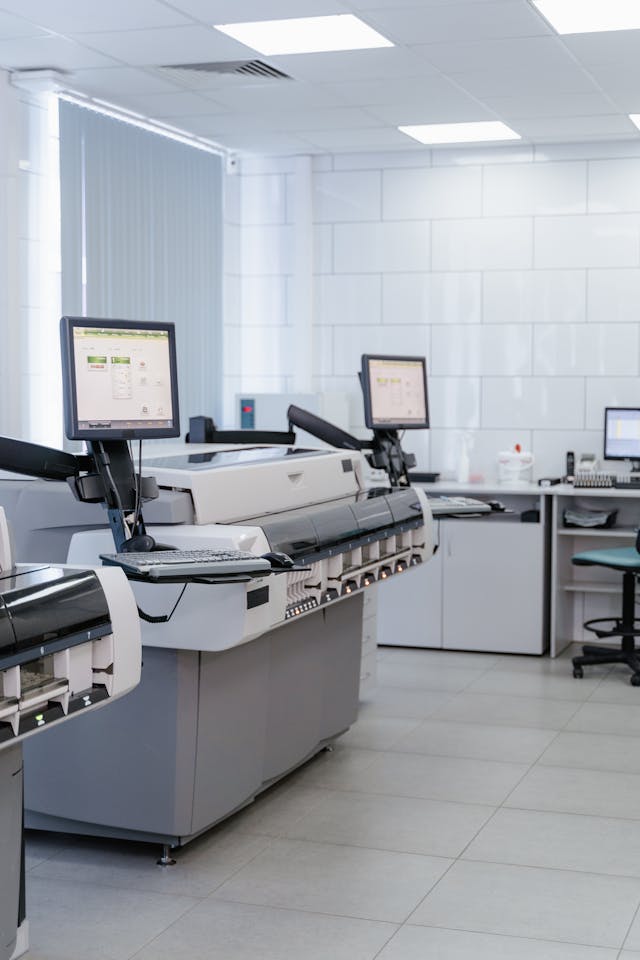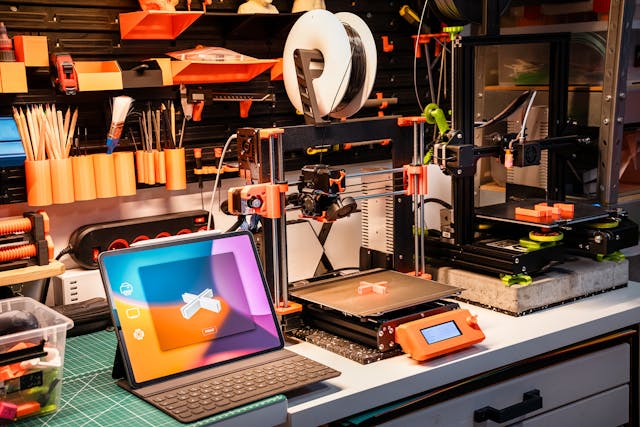The Future of the Printing Industry
 What does the future of the printing industry hold? The printing industry has undergone significant transformations over the past few decades, adapting to technological advancements and changing consumer preferences. As we move further into the digital age, the future of the printing industry continues to evolve with new trends and innovations. In this blog, we’ll explore some of the key developments shaping the future of the printing industry and what they mean for businesses and consumers alike.
What does the future of the printing industry hold? The printing industry has undergone significant transformations over the past few decades, adapting to technological advancements and changing consumer preferences. As we move further into the digital age, the future of the printing industry continues to evolve with new trends and innovations. In this blog, we’ll explore some of the key developments shaping the future of the printing industry and what they mean for businesses and consumers alike.
The Future of the Printing Industry: Trends
Digital Printing Advancements
Digital printing technology has made remarkable strides, offering higher quality, faster turnaround times, and greater customization options. These advancements are expected to continue, making digital printing more accessible and efficient.
On-Demand Printing
On-demand printing allows businesses to print materials as needed, reducing waste and storage costs. This trend is expected to grow as more companies adopt just-in-time production strategies.
Variable Data Printing
Variable data printing (VDP) enables the customization of each printed piece with unique information, such as names, addresses, or personalized messages. This technology is becoming increasingly sophisticated, allowing for highly targeted marketing campaigns.
Eco-Friendly Printing Practices
Sustainability is becoming a major focus in the printing industry, with businesses and consumers alike prioritizing environmentally friendly practices. The future of printing will see more eco-friendly options and innovations.
Recycled and Sustainable Materials
The use of recycled paper and sustainable materials is on the rise. Consumers are demanding more eco-friendly products, and businesses are responding by incorporating recycled and certified sustainable papers into their offerings.
Green Inks and Processes
Eco-friendly inks, such as soy-based and water-based inks, are gaining popularity. These inks reduce harmful emissions and are safer for the environment. Additionally, energy-efficient printing processes and equipment are being developed to minimize the environmental impact.
Integration of Augmented Reality (AR)
Augmented reality (AR) is transforming the way people interact with printed materials. By integrating AR, printed pieces can offer interactive and immersive experiences, bridging the gap between print and digital.
 Interactive Print Media
Interactive Print Media
AR can turn traditional print media into interactive experiences. For example, scanning a printed brochure with a smartphone can reveal additional content such as videos, 3D models, and interactive graphics.
Enhanced Customer Engagement
The integration of AR in print can enhance customer engagement by providing a more dynamic and interactive way to consume information. This technology can be particularly effective in marketing and educational materials.
3D Printing Expansion
3D printing, or additive manufacturing, is revolutionizing various industries by allowing for the creation of complex three-dimensional objects from digital models. The future will see even more applications of 3D printing technology.
Customization and Prototyping
3D printing is ideal for creating customized products and prototypes. It allows businesses to quickly produce unique items tailored to specific customer needs or rapidly prototype new designs for testing.

Healthcare and Manufacturing Applications
3D printing is being used in the healthcare industry to create customized medical devices, implants, and prosthetics. In manufacturing, it enables the production of complex parts and components with precision and efficiency.
Automation and Artificial Intelligence (AI)
Automation and artificial intelligence are playing an increasingly significant role in the printing industry. These technologies are improving efficiency, reducing costs, and enhancing the quality of printed materials.
Automated Workflow Systems
Automated workflow systems streamline the printing process, from order placement to final production. This reduces manual intervention, minimizes errors, and speeds up turnaround times.
AI-Driven Quality Control
AI-driven quality control systems can detect and correct printing errors in real time, ensuring high-quality outputs. These systems use machine learning algorithms to continually improve accuracy and efficiency.
The Future of the Printing Industry: Conclusion
The future of the printing industry is being shaped by technological advancements, sustainability initiatives, and the integration of new media. As digital printing, eco-friendly practices, augmented reality, 3D printing, and AI continue to evolve, businesses and consumers can expect more efficient, customizable, and engaging printing solutions.
For cutting-edge printing services and expert advice, contact Automation Graphics.
Automation Graphics
519 8th Avenue
3rd Floor
New York, NY 10018
(646) 205-3037
